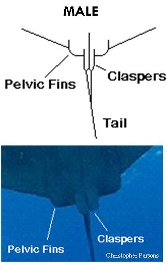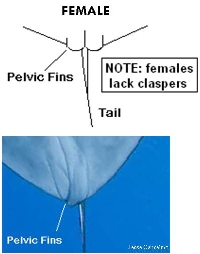Patrick Isaacs
Reproduction
(Manta Birostris)
Reproduction
The Manta ray is ovoviviparous-
An animal develops within an egg that remains within the organism's body, all the way up until they hatch or are about to hatch. The process includes birth, and is quite similar to the human process, but unlike the embryos of viviparous species, ovoviviparous embryos are nourished by the egg yolk rather than by the mother's body.
+The litter size is typically- 2 (with each pup wrapped in a thin-shell that hatches inside the mother, and then the pup is born alive)
+ Typically, the birthing process takes place in relatively shallow waters. The young will remain there for about 3 years before the start to explore and expand their range a lot further off the shore. Manta Rays are fertilized internally, similar to other rays, and sharks.
The Process
Male manta rays have a pair claspers (similar to a penis), along the inner part of their pelvic fins. During courtship, the male chases the female, and then eventually one grasps the tip of one of her pectoral wings between his teeth. Then, he begins to press his belly against hers.
Then, the male flexes one of his claspers and inserts it into the female's pelvic fins ( her vent). Copulation lasts about 90 seconds. The fertilized eggs develop inside a mother manta's body for around 9 to 12 months. The location where manta rays give birth is still not known.
According to Elasmo Research group, there have been reports of baby mantas being born as its mother was in mid-leap, but these reports are not considered typical. Mother Manta Rays may take a year off between their pregnancies to "re-build" their energy stores.
Life Cycle
+A newborn manta ray is about 125cm wide and
its growth is rapid, and is said to double during the first year of life.
+Males mature when they reach about 4 meters, and females mature at about 5 meters. (the age is unknown when this occurs)
+Also, it's not known how long Manta Rays live, but all educated guesses point to around 25 years.
To learn more about the Manta Ray's interactions, click here.


